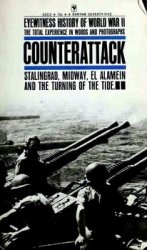The Civil Works Administration (CWA) was a New Deal program that provided work relief in the winter of 193334. In the autumn of 1933, relief administrator Harry Hopkins persuaded President Franklin D. Roosevelt that millions of Americans would suffer during the coming winter without major new action. The economy was not recovering sufficiently to provide jobs for the unemployed, the Public Works Administration (PWA) could not produce a significant number of jobs until the spring of 1934, and the Federal Emergency Relief Administration (FERA) could not provide sufficient assistance for the jobless. unemployment remained at over one-fifth of the labor force.
Early in November 1933, Roosevelt transferred $400 million from the PWA and authorized Hopkins to establish the Civil Works Administration, which would implement work-relief projects to hire unemployed workers. Unlike the FERA, the CWA was entirely a federally supported program and was from the first a work-relief agency that hired needy people to work on specific projects, an approach that Hopkins and Roosevelt much preferred to dispensing direct relief. Half of the CWA workers came from existing relief rolls, but the other were unemployed and were not subjected to a means test. CWA workers were paid at regional average minimum wages, well above prevailing relief payments.
Harry Hopkins implemented the new agency with his characteristic energy. By late November, nearly 1 million workers had received their first checks from the CWA, and its height in mid-January, the agency employed more than 4 million people. Spending some $900 million in just a few months, the CWA inevitably involved some inefficiencies and slipshod or seemingly unnecessary work (often called “boondoggles”), but it also enriched the nation’s infrastructure. CWA built or improved 40,000 schools, 1,000 airports, 3,500 parks and playgrounds, and hundreds of thousands of miles of roads. It laid more than 10 million feet of sewer pipe and built 150,000 outhouses for rural families. It employed 50,000 teachers and some 3,000 artists and writers. And it helped the nation through the winter of 1933-34, providing the dignity of work instead of a handout and raising both the income and the spirits of millions of Americans, not only in the Christmas season of 1933 but through the rest of the winter as well.
The CWA nonetheless came to seem too expensive and too vulnerable to President Roosevelt, who terminated
It in the spring of 1934. It had served its essential function of seeing the country through the winter of 1933-34; it was increasingly criticized for inefficiency and political manipulation (although, as with other New Deal relief efforts, corruption and graft were remarkably small); and by the spring, the administration hoped that economic improvement and PWA projects would provide jobs for CWA workers. Always concerned about the psychological impact as well as the costs of government relief, moreover, Roosevelt was worried about creating a permanent group of people dependent upon government jobs and money. As early as February, Hopkins began reducing CWA rolls in the South, where warm weather returned first; and by early April he had let some 4 million workers go throughout the nation. A number of CWA projects were taken over by the FERA in 1934, and beginning in 1935, the Works Progress Administration would begin an even more expansive work-relief program. Although a short-lived agency, CWA was nonetheless an important one, not only in the help it gave and in the projects it undertook but also in the precedents it established for work relief and federal responsibility for economic security.
Further reading: Bonnie Fox Schwartz, The Civil Works Administration, 1933-1934: The Business of Emergency Employment in the New Deal (Princeton, N. J.: Princeton University Press, 1984).




 World History
World History









